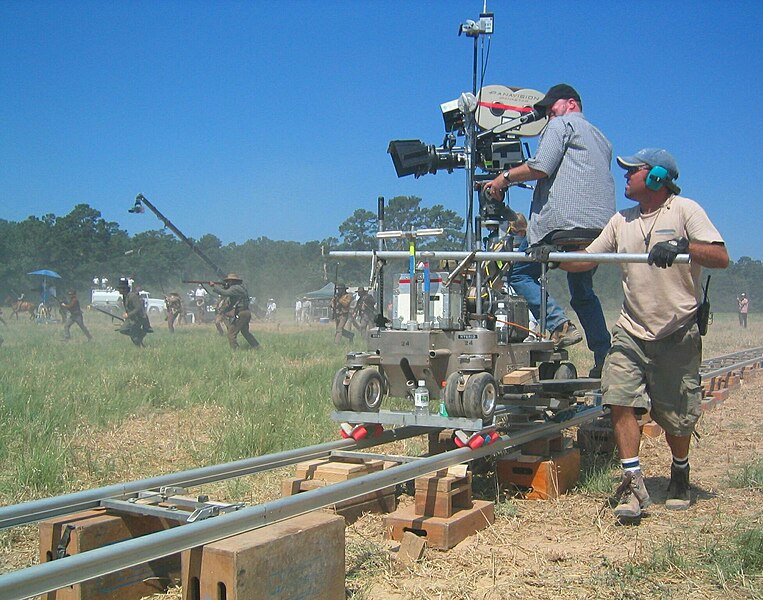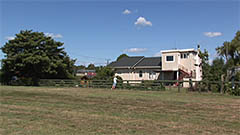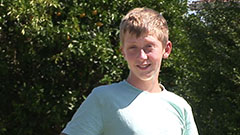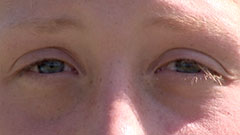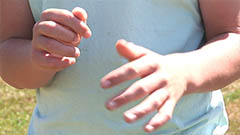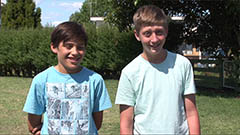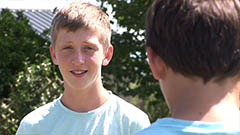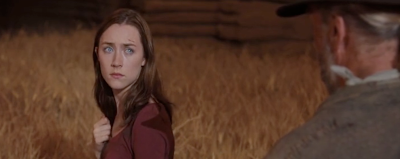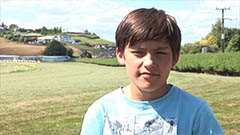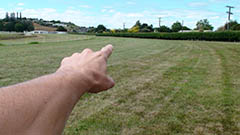Recently, we had been given a
task to film with our peers and the task had to consist of this: ‘A character
opens a door, crosses a room and sits down in a chair opposite another
character, with whom she/he then exchanged a couple of lines of dialogue.’
Our group looked at our
film-making poster and went through the process of film-making. So firstly, we
went about thinking about the concept of the film and how we wanted to portray
each part. We thought about the dialogue and what we were going to say. I had a
clear vision of someone who had killed another person but no-one understands
how and why. After discussing with the group, they liked the idea about a
post-murder idea but wanted to adapt it to a schizophrenic person so there
would be a background story to this behaviour.
Then we selected roles and the
first major was director. Being asked to be
director was a delight but practically I was scared about my skills of being
one. Then the rest of the roles were given out to whoever wanted them.
When choosing the location, 2 of
us set our eyes on the drama studio for filming.
For rehearsing, we only read
through the script once and started filming which didn't work as well as we didn't know the lines properly so we had to stop the scene and redo it because we had said something completely different for example, once I had stolen someone's line so we had to re-shoot that.
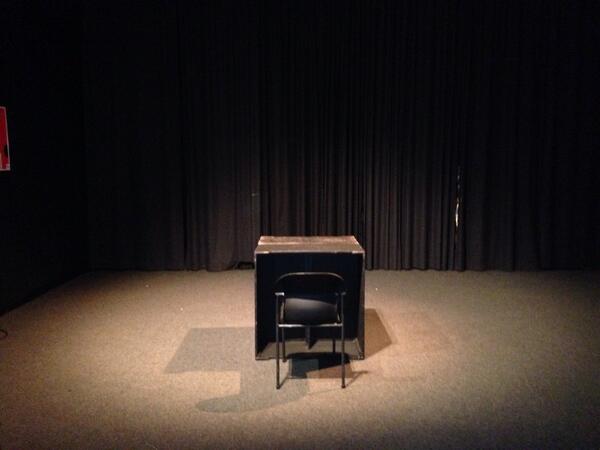
Scene 1
(Door slams Lauren walks in)
Sophie - Who's there? (Feeling anxious and paranoid)
(No answer)
Lauren - (goes to shake hand) Hello my name is Inspector Amber
Watkins, please take a seat.
Sophie - (ignores friendly gesture and looks away) no speech
(Lauren sits down and waits for Sophie to respond to orders)
(Not bothered facial expression)
... Pause of silence
(Lauren sorts out papers and puts recording on table)
(Sophie continues to fidget and breathing heavily)
Sophie - I did nothing wrong, they did it.
(Lauren looking emotion less)
(Lauren starts recording)
Lauren - At 16:37 Nicole parsons was found dead in the back
garden of Madison bloom, what is your take on this?
Sophie - (mumbling to herself) I didn't do it, i did nothing
wrong.
Lauren - where were between hours of 4 and 5 o clock
Saturday evening?
Sophie - I was with them
Lauren - (looking angry and concerned) who is ... them?
Sophie - (walks into spotlight) Their my friends ... erm ...
(hesitates) My friends ... (screams) Don't you believe me? (Slams hands on
table)
Lauren - Calm down (reaches for Sophie’s hand)
(Sophie moves hands, and walks backwards)
Scene 2
(Sapir grabs Sophie’s shoulders)
Sapir - Hello there (sly face)
Desiree - so how yah been Madi? Killed anyone lately? (Grins repeatedly) (Sly face)
Sapir - Yea Madi, Killed anyone lately? (Touching her hair)
Sophie - (faces windows) I didn't kill anyone ... You did it
... Why don't you guys just own up? (Controlling voice)
Desiree - So what if we killed her? No one will find out!
(Flicks Sophie’s hair) (walking around her)
Sapir - Technically (emphasis on the 'Y') you killed her,
because you hand the knife. We didn’t tell you what to do.
(Sophie should be silent, but looking angry)
Desiree - whooooa is someone getting angry? (Laughs and
pokes her)
Sapir - Is someone going to throw a tantrum? (Laughs and
pokes her)
(Sapir and Desiree push Sophie around)
Sophie - (screams) stop it, stop it ... I didn’t do anything,
it wasn’t my fault ...
Scene 3
(Lauren scared and very worried)
(Lauren looks at Sophie whilst she is getting knocked about)
Lauren - Who are you talking to?
Sophie - (Realised she is alone) I was talking to my
friends.
Lauren - Where are your friends?
Sophie - They are right here.
(Sapir and Desiree make a mess)
(Sophie wide eyed and scared)
Lauren - Stay here I'll be back
(Lauren sprints away)
(Sapir appears and drags Sophie head to the table)
(Sophie bends down)
Sapir - This is for your own good
(Sapir’s passes Desiree the hair) (Desiree wraps round hand)
Desiree - This is what’s best for you...
(Slams head on table)
(Sophie collapses on floor)
Filming took us over 3 hours in
total, we spent until 6pm at school on a Friday until we were sent out and
another half an hour at one lunch time. This was aggravating as you need to get the same set-up and then do
the scenes over again. I have now truly understood how hard filming making is, especially
when you have an idea in your head and it’s so unique but when it gets down to
actually filming it you tend to lack motivation as it gets tiring to film
things over again etc...
Eventually we got round to
putting the shots into the editing software (Final Pro Cut) where we had to
convert a bunch of videos to AVI Pro Res (LT) and then put it on Final Cut Pro
(FCP). Label all the videos and then start editing it.

After watching this plenty of times, we came to the conclusion that we needed to redo things as there was no match-on-action, continuity or shot, reverse shot (by this time we had learnt about all these things).
So we headed off to do the mind-mapping, storyboarding and shot listing. From the picture below, you can see the things we wanted to include. This time we had an easier concept which was a girl walking into a classroom and sitting down chatting to her friends.
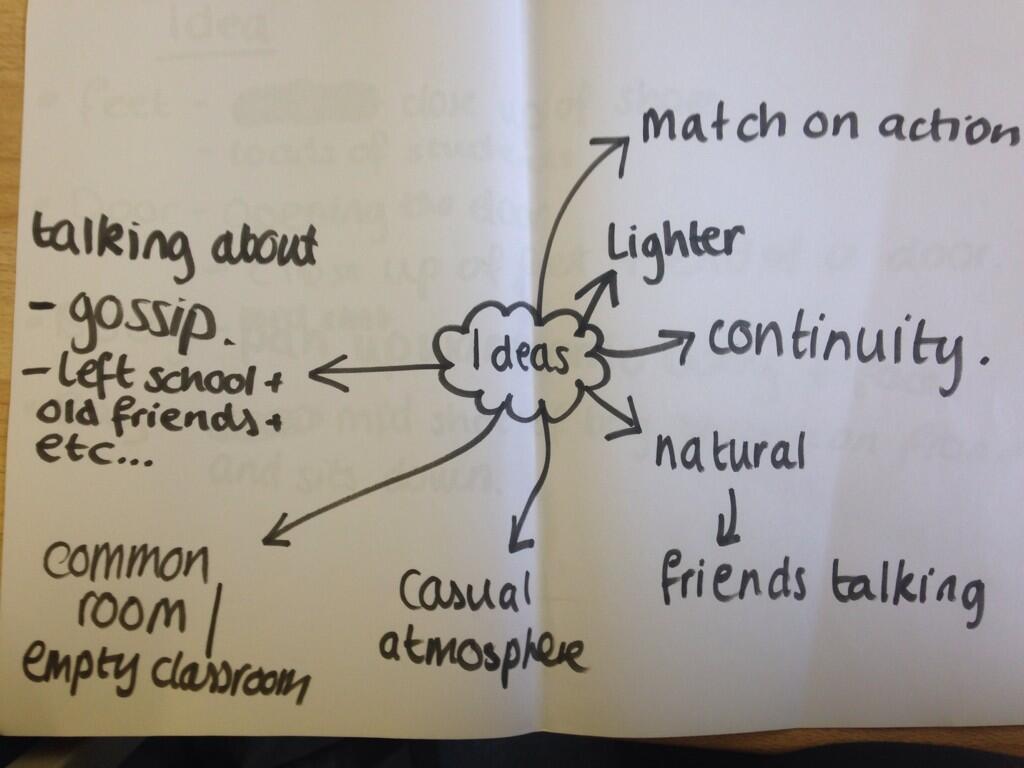
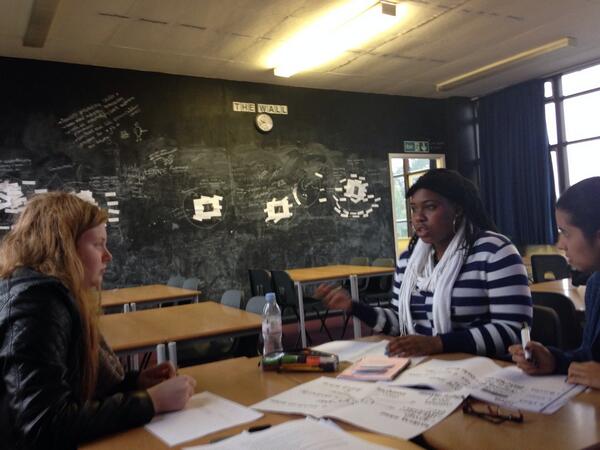
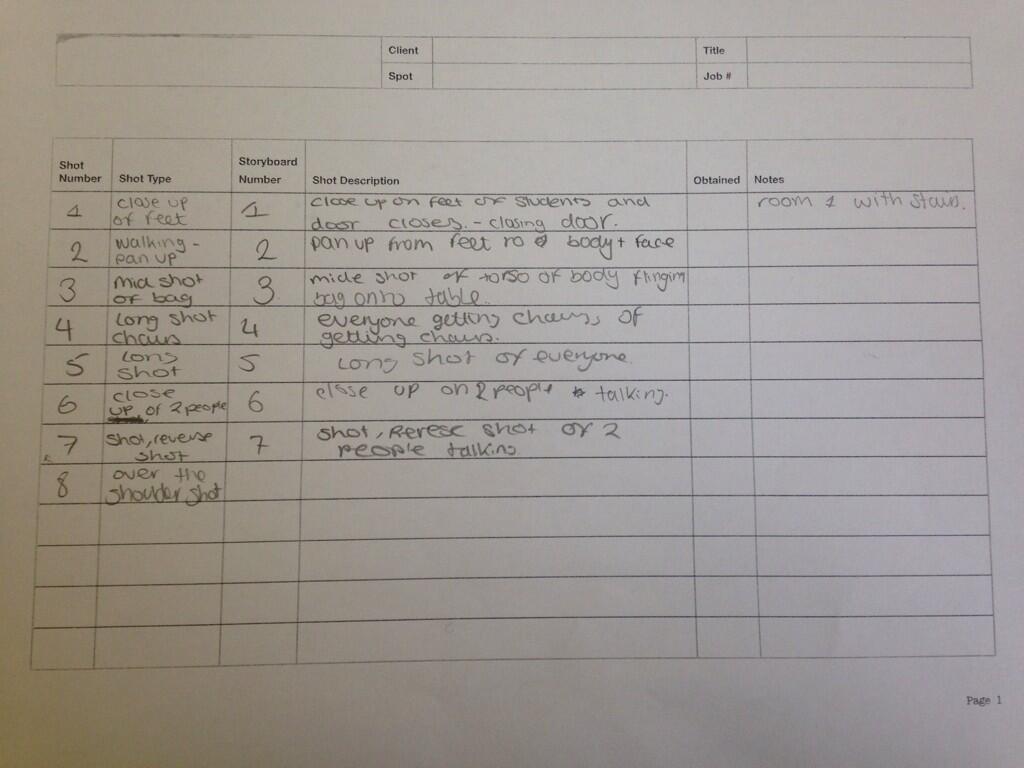
Although we wanted it to be natural, we had a script so we could know what to say so when we had edited, it would make sense to edit the scene in the correct way.
Enter Room – Shot 1
P1 : Hey What’s up?
P2 : Nothing Much, are you going to Poppy’s party?
P1 : Mm.. I don’t think so. Do you remember what happened last time?
P2 : YES! I was such an awesome night but oh I remember what happened between you and Jade.
P1 : Yer, I know right, she was well out of order.
P2 : It wasn’t even her party, she shouldn’t of even started a fight with you.
P1 : yer exactly. She got thrown out so that’s fine with me.
P2 : you should just come, I bet she won’t even be there
P1 : Well I have so much work so. (Interrupted)
P2 : No, you’re coming and that’s final
P1 : Fine, but you owe me.
P2 : We should go shopping
P1 : Yehhh. I have been dying to buy this awesome jacket.
P2 : Oh My God, is that one from the shop in town/Topshop?
P1 : yehh, we should go on Friday
P2 : yeh, I can’t wait, the parties going to be epic.
P1 : Yeh, but if Jade is there, then I am leaving!
P2 : Ok fine, that’s fair
(Bell Rings)
P1 : Got to go to Psychology bye
When filming we used one extra person which was set to casually doing her work. The pre-production didn't include the idea of people already begin there and taking but we had made up the idea on the day so it would look more natural and having a background conversation would make a normal natural setting. As usual, the filming had gone to plan as there wasn't many shots to do.
In Post-Production, we had edited the film normally and had completed the deadline.





